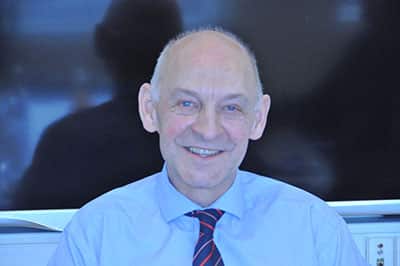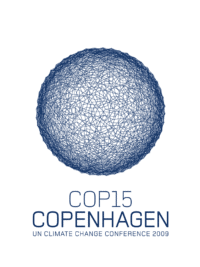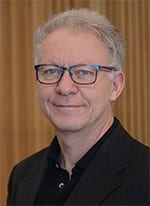
2. Skive – an incubator of green-energy tech
Oil crisis / A brief history of biogas development / The advent of the centralised model / Political setbacks / COP 15 / Biogas 2.0 / Lessons learnt
Denmark’s reputation for green energy innovation is forged out of a crisis. It became an incubator of green energy technology by design 40 years ago, to address the issues of energy security, environmental degradation and unemployment.
The key driver was the oil crisis of the 1970s, a consequence of the West’s support for Israel against Egypt in the Yom Kippur War. The Middle East turned off the taps, driving up oil prices by 300% (from c $3 to $12 barrel).
While the war was in 1973 and the length of the embargo relatively short, the impacts rolled through the decade (which incidentally ended with a second oil shock in 1979 following the revolution in Iran and fall of the Shah). Denmark was brought to a standstill.
‘We determined then to pursue a strategy for energy independence,’ the Mayor of Skive Municipality Peder Christian Kirkegaard (pictured above) recalled over lunch in his office. The Mayor, a farmer, has been 43 years on the council, 20 as vice Mayor and the last six as Mayor.

Today Skive is a designated Energy City and self-sufficient in biogas, which reflects both the municipality’s role in developing green energy technology and the region’s farming roots.
The 70s were a time of hardship, with high unemployment. “People had to leave their cars at home,” says Mr Kirkegaard. For a largely rural population the impacts hit hard.
“A lot of things happened in that period,” he recalls. “Denmark didn’t have any energy resources as we refused to pay the high oil price. We realised then we could not be dependent on others. As a country, we started to  explore alternatives, for oil and gas, and to develop wind and solar technologies, and biogas.”
explore alternatives, for oil and gas, and to develop wind and solar technologies, and biogas.”
The development of biogas in Denmark has subsequently come in waves and Skive, both as a municipality and as a key player on the wider Jutland Council, has been the primary driver of development. It is worth taking a brief look at the history of the sector’s development as it exemplifies how continuous support is necessary to reap the long-term benefits.
A brief history of biogas development in Denmark
In the 70s, in response to the oil crisis, the first AD units were experimental farm-scale facilities in the region and largely developed as a result of community initiatives, involving the municipalities, farmers and the Folke High Schools, essentially adult education colleges.
Denmark’s district heating networks – with hundreds of distribution companies – enabled such an organic approach. All stakeholders were motivated to look for alternative energy supplies because of the high oil prices and unemployment.
There were successes and failures, more of the latter than former, which led the government to intervene to formalise the sector and the Ministry of Trade established STUB, to oversee Cooperation for the Development of Biogas Plants.
STUB undertook an inventory of existing plants and funded three pilot plants. The results, however, remained stubbornly less than promising. As they entered the 80s, most of the facilities were failing or had been abandoned, blighted by poor yields and high production costs.
Centralisation and a biogas boom
However, rather than write off biogas these failings were investigated. Essentially, it was found farmers were struggling to meet the demands of developing biogas – economically and operationally – while keeping their farms going, leading to the development of the centralised biogas model, which delivers economies of scale, and predominates today.
This strategy led to a number of ‘village energy projects’ being established, involving between 5-50 farmers serving a central biogas facility. These facilities were principally developed in north Jutland, with the council and government underwriting construction. While jobs and energy security remained the primary drivers, this was in part to develop biogas to service areas not served by fossil natural gas. Around 25% of the country was ‘off grid’ at the time.
However, it must be noted that in response to the oil crisis Denmark, having found fossil gas, had embarked on constructing a national grid as part of a new energy framework.
Two other factors benefited biogas. First, as oil prices fell, Denmark levied high taxes on the fuel to prevent the country becoming reliant on it again.

Secondly, growing concern about pollution from farm manures emerged. Denmark is famed for its bacon and at the time pigs notoriously outnumbered people 5 to 1; the population being around five million. Farmers routinely spread to the land, causing nitrification, or let the slurry run off directly into the waterways, causing eutrophication, adversely impacting the farming and fishing industries respectively.
A raft of environmental regulations was introduced as a consequence. A requirement to have enough slurry storage for 6-9 months of the year and nitrogen limits on spreading to land meant farmers had to rethink their manure management strategies.
On the back of this, the Danish Energy Association, Environmental Protection Agency and Ministry of Agriculture joined forces to develop the Biogas Action Plan (1988) (BAP). This furthered the centralisation programme, with grants up to 40% made available for biogas development.
Political ups and downs
This served all parties well; the DEA were getting more energy, the EPA and Ministry of Agriculture got more control of organic waste and manure management, and farmers were relieved of the cost of developing storage and had their manures processed for free.
BAP became a rolling programme, developing between 2-4 biogas plants a year right through until the mid-90s. Simultaneously, a support programme was established to help launch the development of on-farm AD as part of the requirement to tackle the pollution from manures.
Over the period, this dual track approach led to the development of over 40 plants. In the mid-90s however development stalled, when energy markets were liberalised, making all renewable energies including biogas less cost competitive.
Then in 2001 the country elected a liberal/conservative coalition government, more concerned with achieving cost efficiencies in energy supply than environmental issues. It pulled the plug on support programmes.

However, in 2005 an unexpected lifeline emerged in the form of COP15. Copenhagen were to host the global climate conference and, to put it bluntly, needed an initiative to show it was leading on the climate issue. Re-invigorating its already robust renewable energy sector was low-hanging fruit. Support for biogas was renewed.
This support has remained stable since, albeit the Danish equivalent of a renewable heat incentive subsidy for biogas is currently ending with no certain replacement currently on the table.
Yet the industry remains bullish. The feedstock has been mapped to deliver 100% biomethane to the grid by 2040 and they are already looking to what might be called biogas 2.0 – electrolysis and further biorefining.
Biogas 2.0
Over the past 40 years the councils of Skive and north Jutland have been steadfast in their advocacy for and support of the industry and remain so to this day. Skive is 100% self-sufficient in biogas and is pushing the envelope of what is possible.
The municipality is today a designated energy city, reflecting its status as a centre of pioneering green energy tech, and exports £40m of green energy tech and services annually. It is also home to Green Lab, a futuristic business park with a 500,000-tonne anaerobic digester at its heart.
‘We were first and are still ahead,’ the Mayor says with justified pride. ‘The reason for this is we decided on a strategy to be self-sufficient. Also, we made it a business, if it’s a good business you can invite investors in.’
For the past decade, Skive’s green energy blueprint has been masterminded by Karl Egeris Krogshede.

‘We want to be more experimental. We’ll do more and bigger. It is the way for Skive to attract educated people, companies and jobs to the region,’ adds Karl, climate consultant to the Skive’s Energy City initiative and the man who delivered GreenLab – which has attracted £160m investment into the region.
Electrolysis is on the agenda across the industry, including amongst on-farm operators. Boe Madsen of Madsen Bioenergi, a 150,000 tonne on-farm AD facility, talks matter-of-factly about a centralised electrolysis facility being established in the region in five years, with AD facilities such as his pumping CO2 to a central site. And if not, of the technology being installed on independent facilities.
Important lessons
According to the Mayor and Karl the key to the successful development of biogas in their region has been consultation, ‘to take the lead and convince people to make them comfortable.’
‘That is the biggest job we’ve had, leading consultations, demystifying the process, eliminating fears and areas of conflict. If you want biogas to happen, wherever you are, you must do this.’
There are many other important lessons that can be drawn from the development of Danish biogas. What is clear is that new technologies must be nurtured over a long period, to develop the technology, markets and skills base.
That is why a long-term strategic vision with clear goals are critical to success. This support has to be consistent and part of a long-term strategy to deliver the rewards Skive and wider Jutland region are benefitting from cleaner air and water as a result of treating slurries and manures, local jobs, energy security and a thriving economy thanks to inward investment and exports. Without ongoing support, the skills base is weakened, fundamentally undermining progress.
And without biogas you cannot achieve net zero.
‘What we have done in Skive is something that has to be done everywhere. We need to be green, so the question is how to be green in the best way,’ says the Mayor.
Skive is home to many of the answers.
You must be logged in to view the rest of the content on this page.
To request a login and password, contact us at info@worldbiogasassociation.org
If you have login details, please enter them below.

